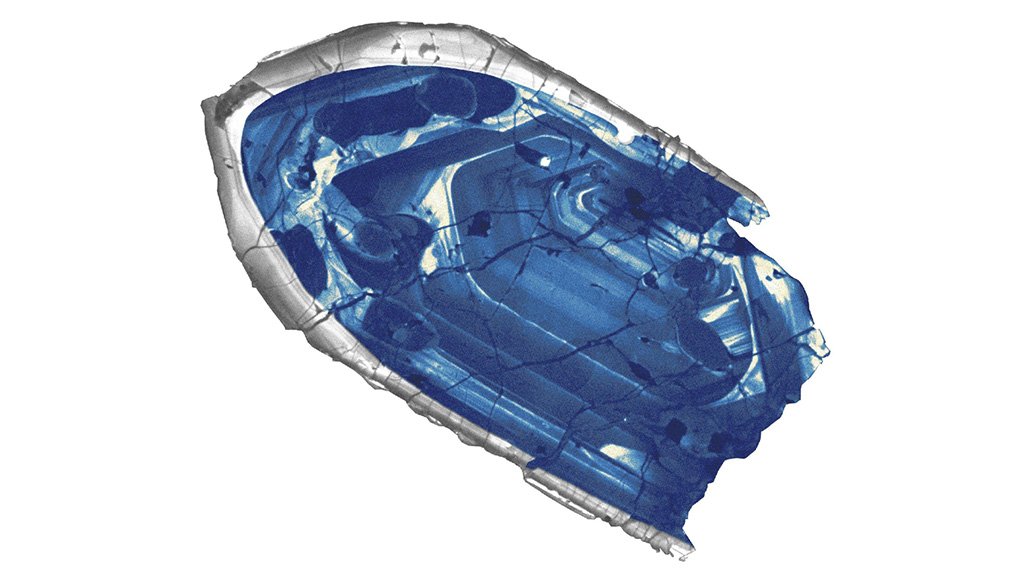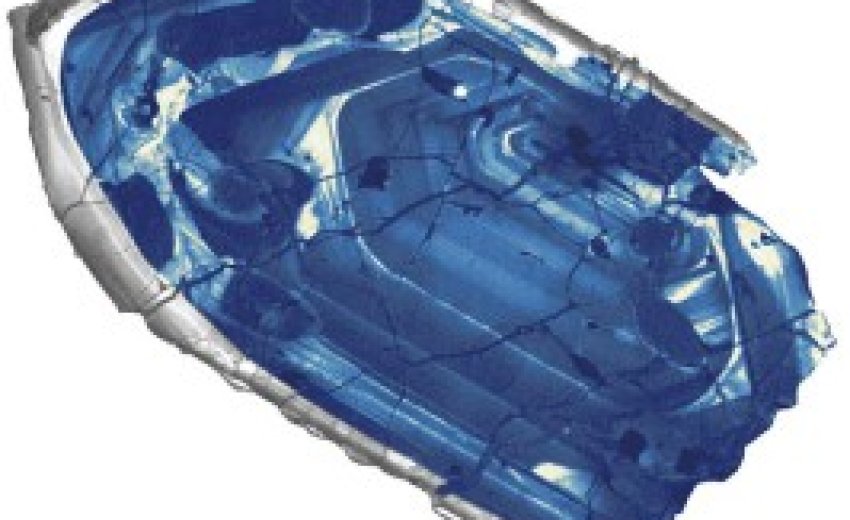Scientists have discovered the oldest fragment of Earth’s crust—and it’s blue.
Mon, 24 Feb 2014: This 4.4-billion-year-old zircon crystal was only 200 million years old when it formed in the calamitous chemical environs of Earth’s infancy. The finding, reported in Nature Geoscience, confirms our understanding of how the planet cooled and became habitable. The BBC reports:
Its implication is that Earth had formed a solid crust much sooner after its formation 4.6 billion years ago than was previously thought, and very quickly following the great collision with a Mars-sized body that is thought to have produced the Moon just a few tens of millions of years after that. Before this time, Earth would have been a seething ball of molten magma.
But knowledge that its surface hardened so early raises the tantalising prospect that our world became ready to host life very early in its history.
 |
| This electric-blue fragment of zircon has confirmed scientists' understanding of how the planet cooled and became habitable. |
This particular remnant of Earth’s past is a rarity—most of Earth’s surface rock is relatively modern (less than a few hundred million years old). But these West Australian zircons are tough pieces of rock that have been clumped together and solidified into new material, which means they still harbor clues about the conditions under which they were formed. So what is this little artifact telling us? It suggests that the Earth had cooled enough by its 100-millionth birthday that a rocky crust was able to form. And by extension, the temperature could have been low enough to sustain life.
|
|
| Watch "Origins: Earth is Born" to learn more about how primordial rock formed and became the planet we know today. |
Photo Credit: John Valley
Related Articles:
Theory of Everything and Concepts of Science Described in Sri Guru Granth Sahib
The Wave-Particle Duality as Described in Sri Guru Granth Sahib
